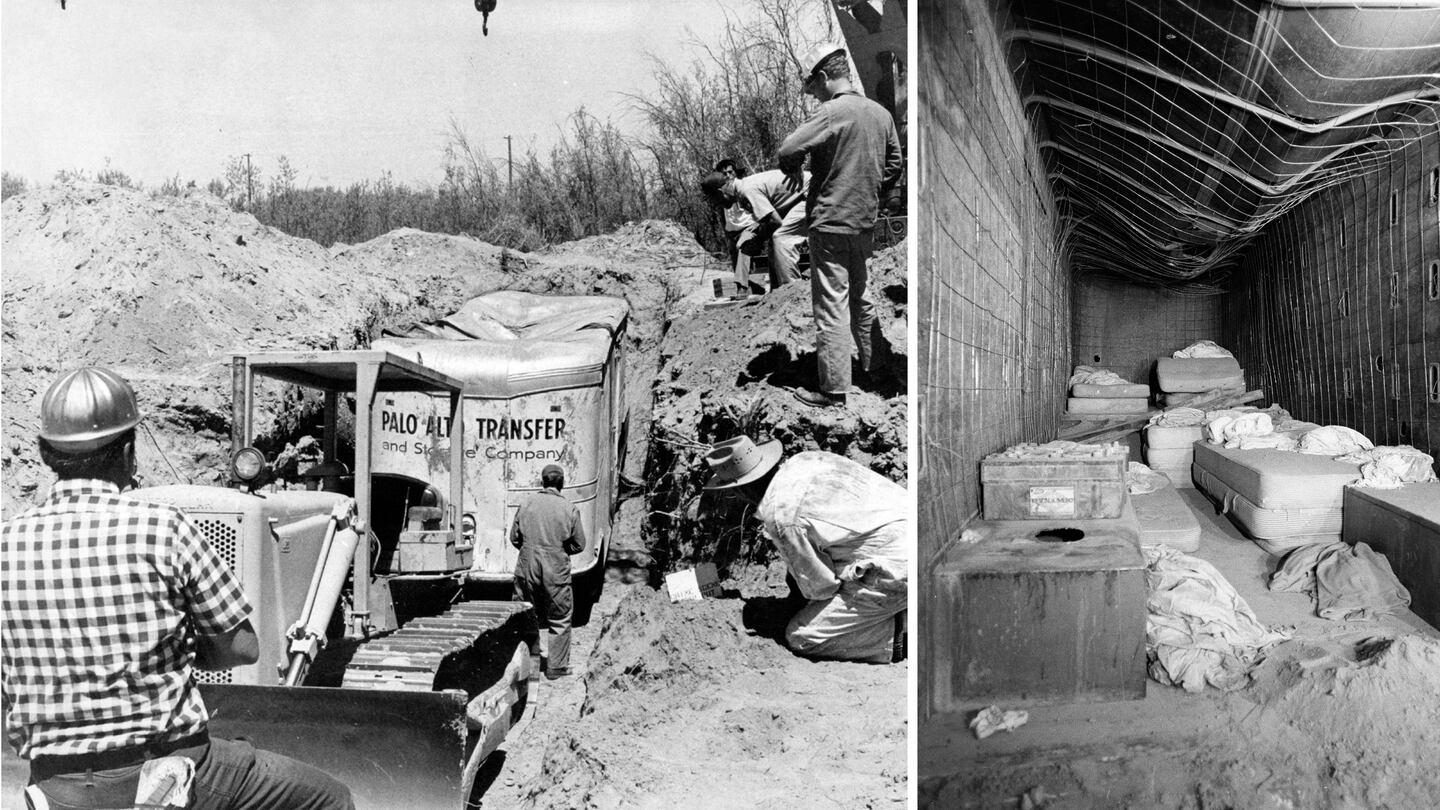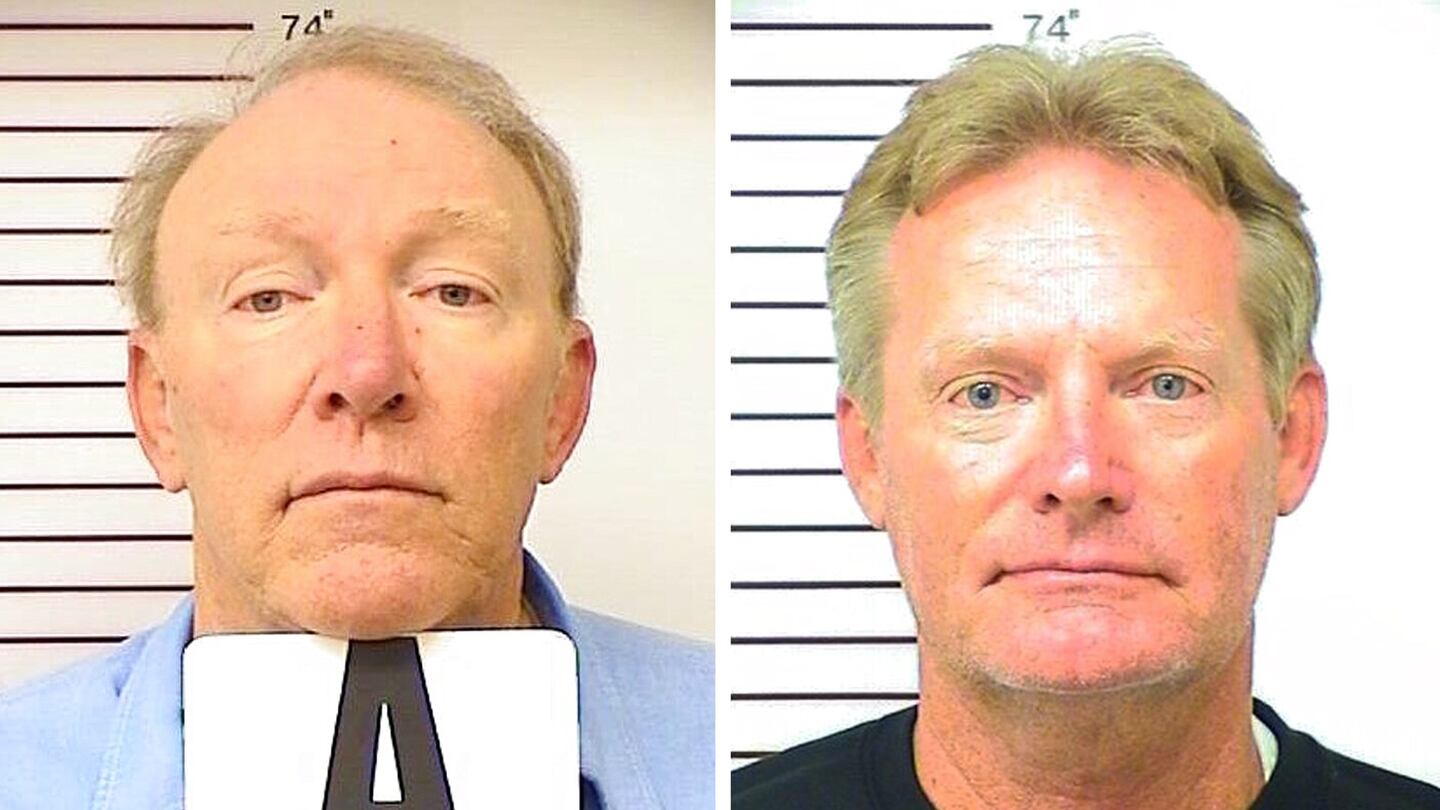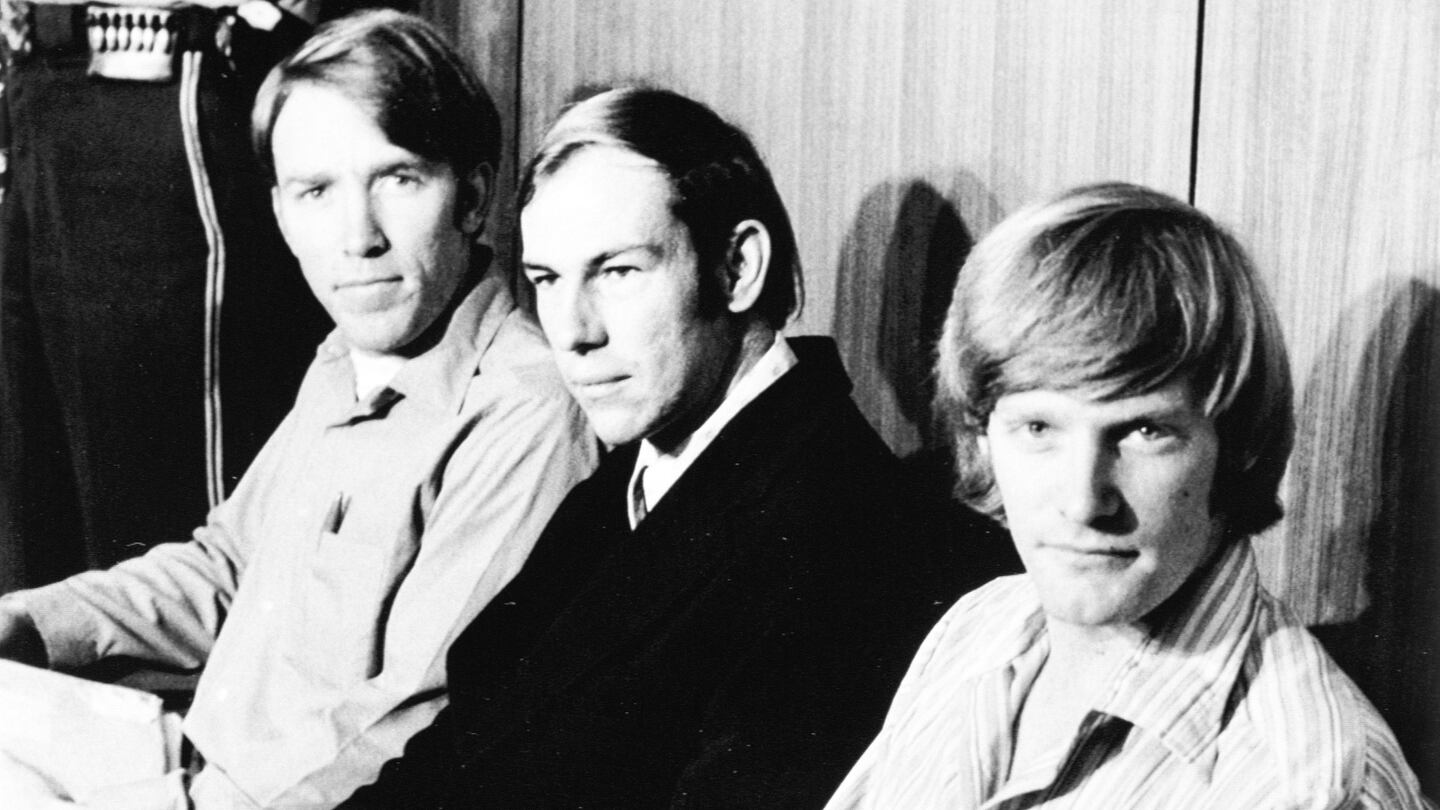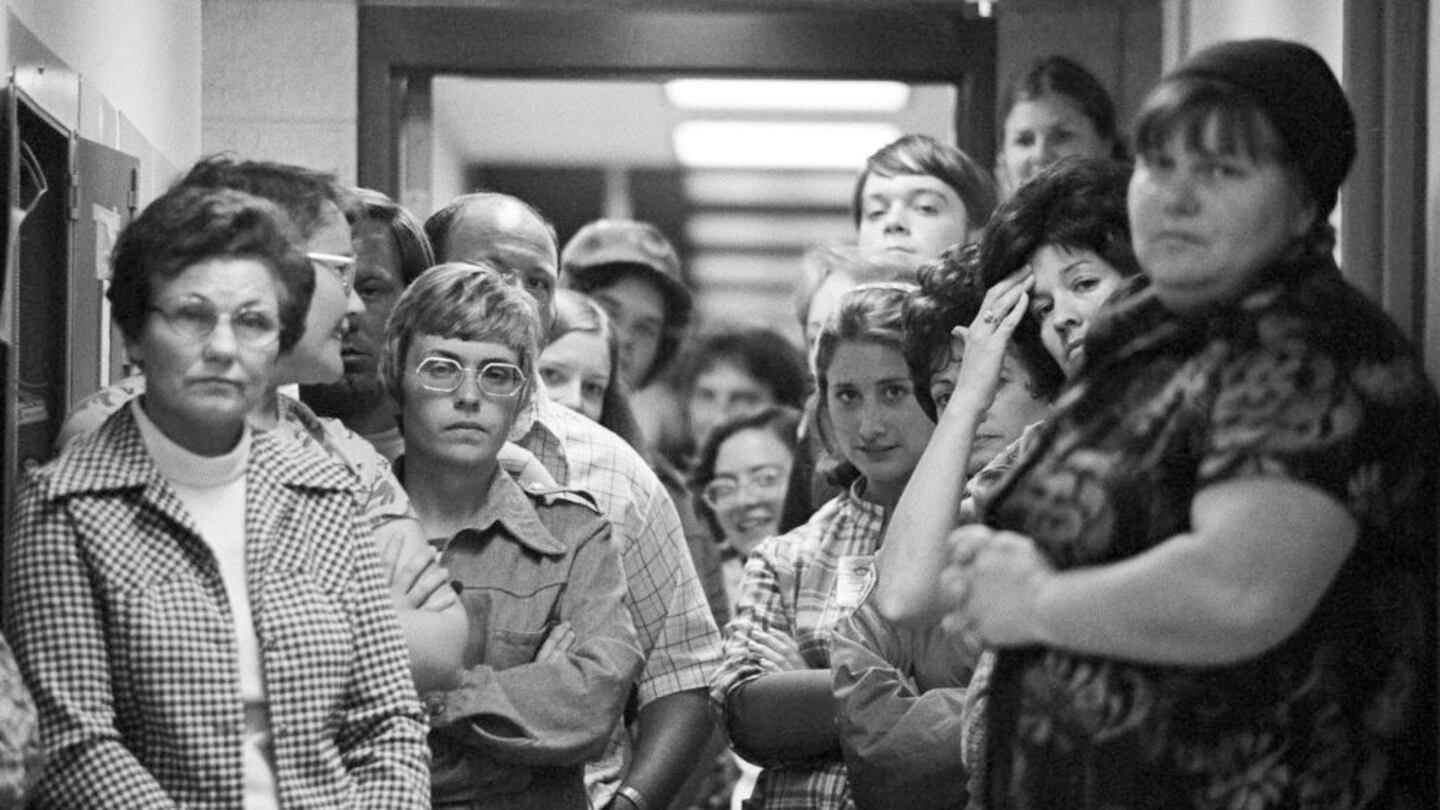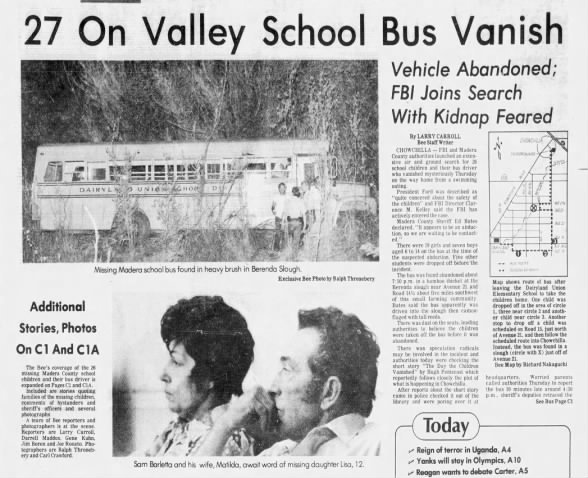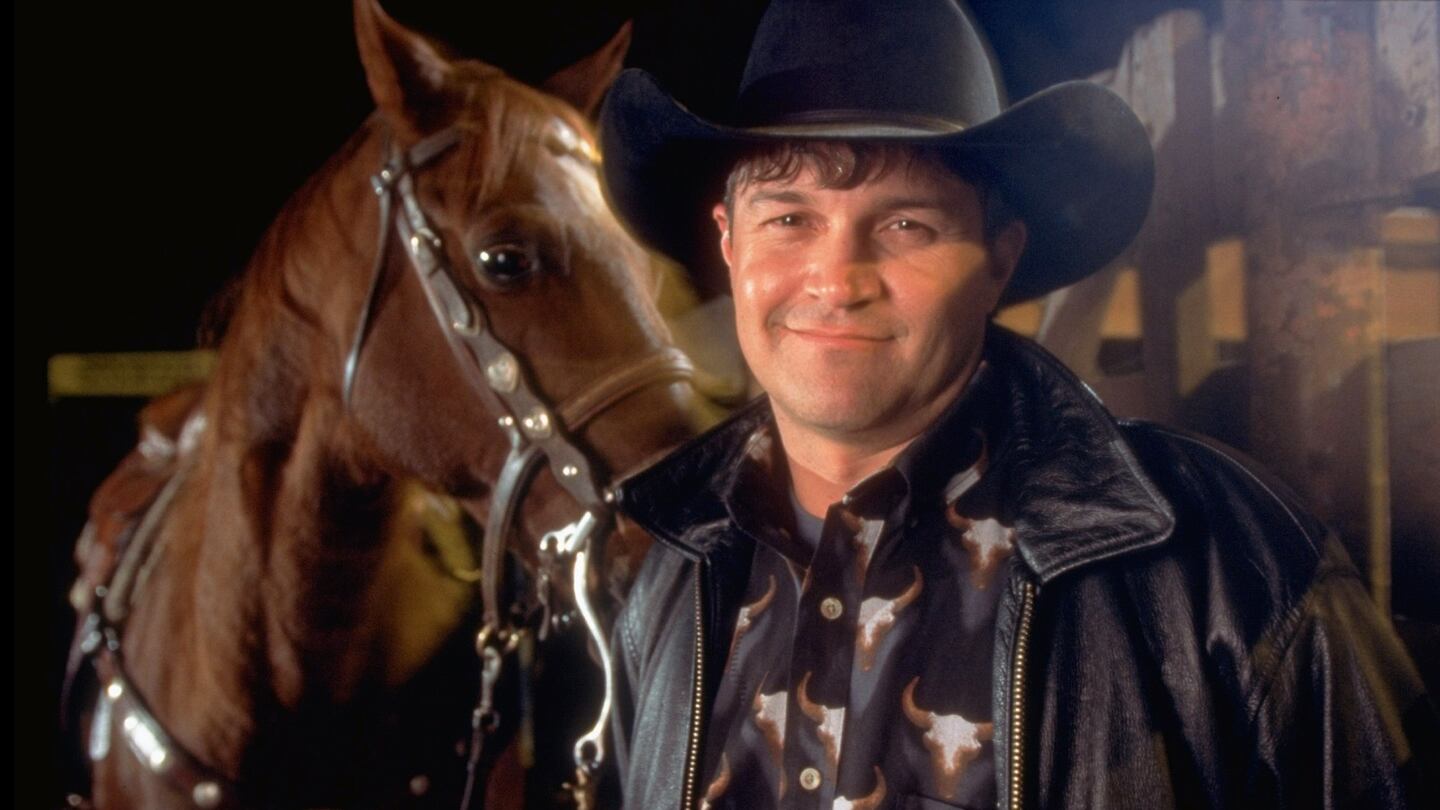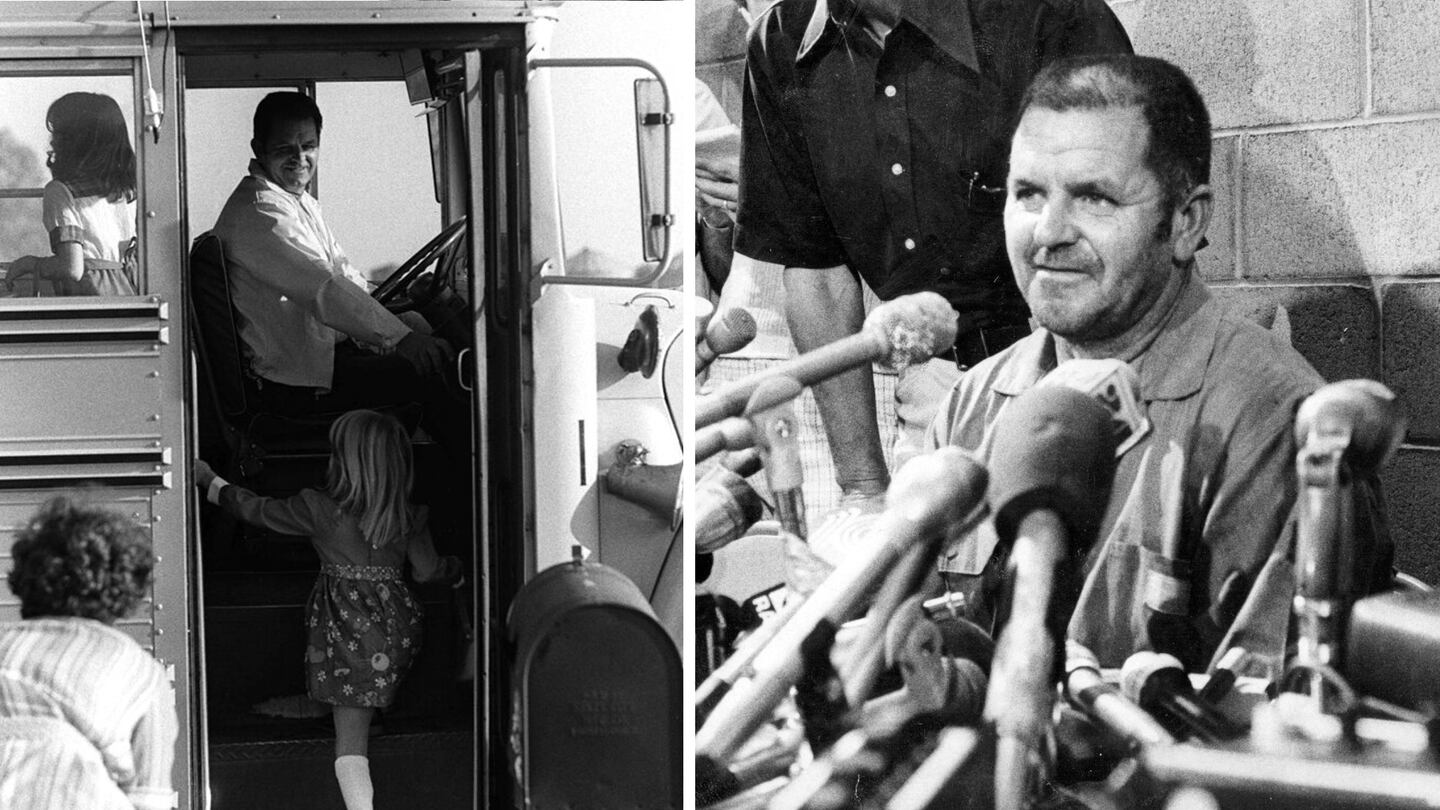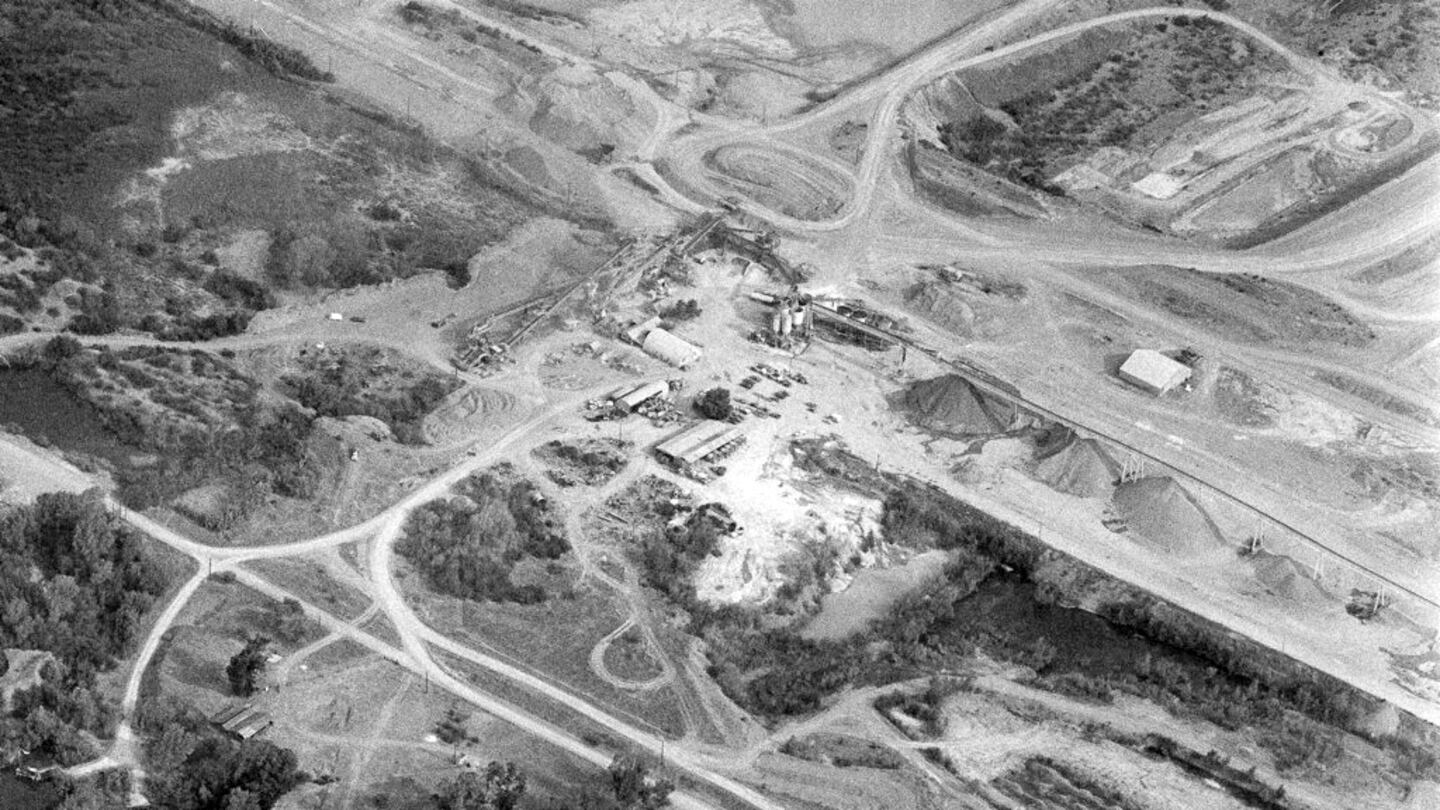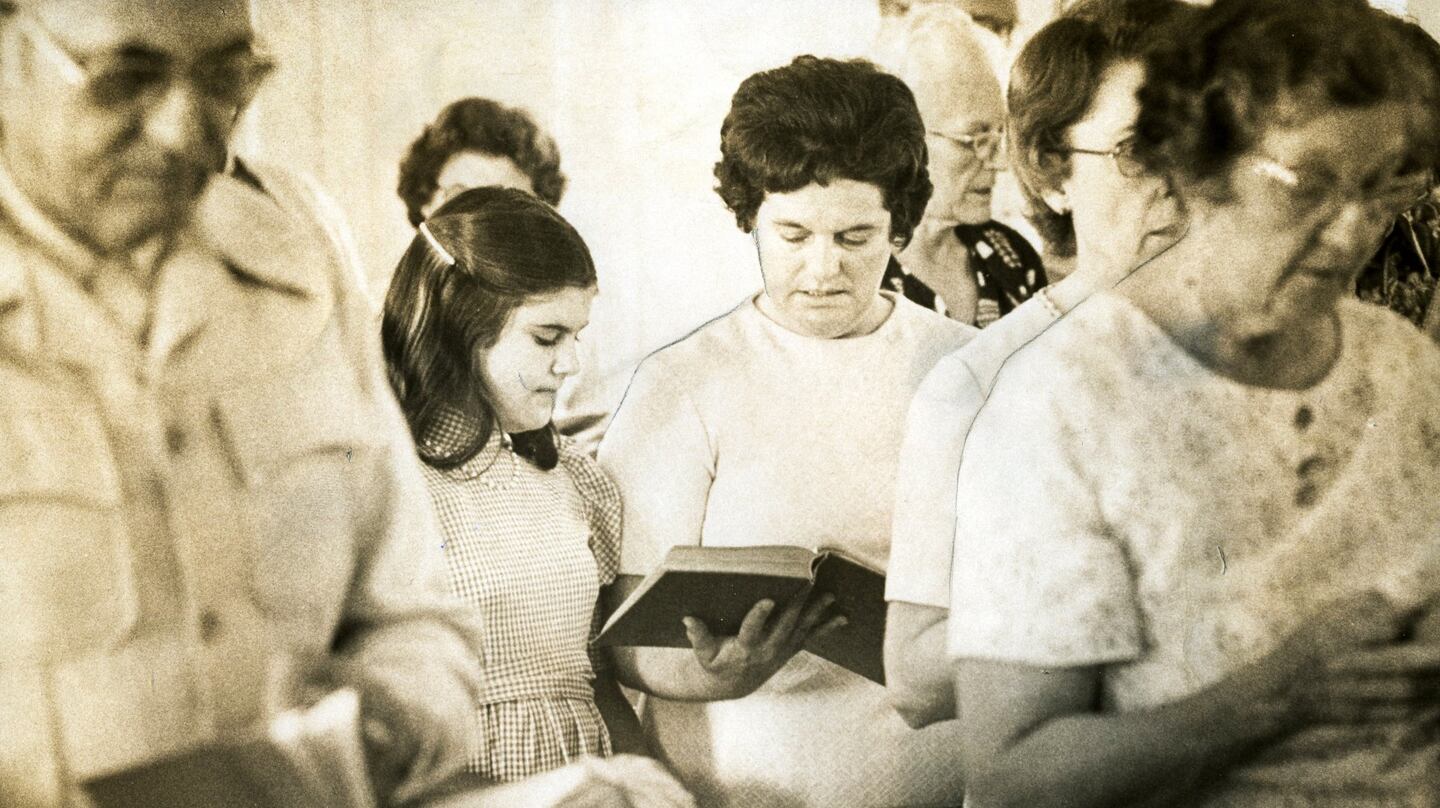SAN LUIS OBISPO, Calif. — California authorities last week approved parole for a man who kidnapped 26 Chowchilla schoolchildren in 1976, along with their bus driver, in the largest mass kidnapping in U.S. history.
Frederick Newhall Woods, 70, was approved for release on Friday, which marked his 18th parole hearing since he and two other men were convicted in 1977 of 27 counts of kidnapping. Woods and brothers James and Richard Schoenfeld were each sentenced to 27 life sentences without the possibility of parole.
Their sentences were later overturned, with an appeals court determining the men should be eligible for parole. According to The Associated Press, Richard Schoenfeld was granted parole in 2012; James Schoenfeld was paroled in 2015.
Woods is currently being held at the California Men’s Colony in San Luis Obispo, state prison records show. It was not immediately clear when he could be released.
The AP reported that Woods expressed regret for the crime, saying that at 24 years old, he didn’t fully comprehend the lasting impact of what he was doing. He and the Schoenfeld brothers kidnapped the children in the hopes that state education officials would pay the $5 million they sought for the children’s safe return.
The men, all from wealthy San Francisco Bay Area families, planned the crime for more than a year. They converted prisoner transport vans to use in the kidnapping and built a lead box to hold their proceeds.
The lead was meant to block the radio signals if authorities inserted tracking devices in with the cash, the AP reported in 2015.
The abducted children and their bus driver, Edward Ray, were taken to a rock quarry in Livermore, more than 100 miles from Chowchilla, and buried alive inside a makeshift bunker. The young victims, who ranged in age from 5 to 14, were missing for more than a day before Ray and some of the older children were able to dig their way out.
Woods, like his accomplices, came from a wealthy family. His family owned the rock quarry where Ray and the children were buried.
“I’ve had empathy for the victims which I didn’t have then,” Woods said, according to the AP. “I’ve had a character change since then.”
“Now I fully understand the terror and trauma I caused,” he added. “I fully take responsibility for this heinous act.”
The AP reported that Madera County District Attorney Sally Moreno opposes Woods’ release.
“This is an individual who’s demonstrated how dangerous he is,” Moreno said following the decision. “He’s ruined the lives of dozens of these kids — they still struggle, a lot of them, with the aftereffects of this.”
Jodi Heffington-Medrano, who was 10 when she was abducted, told the AP in 2015 that the men “basically stole (the children’s) whole youth.”
“Our childhood was completely turned upside down,” Heffington-Medrano said.
Moreno theorized that California Gov. Gavin Newsom may refer the decision for a review by the full Board of Parole Hearings. Last week’s recommendation was made by a panel of two board members: Commissioner Patricia Cassady and Deputy Commissioner Keith Stanton.
The commissioners determined that Woods is no longer a threat to society.
Newsom cannot block the decision because it did not involve a murder conviction, the AP reported. A statement from his office said he carefully reviews all parole decisions to determine “whether a parole grant is consistent with public safety.”
27 hours of terror
The nation became transfixed on July 15, 1976, when a busload of children returning from a swim outing at Dairyland Elementary School failed to make it home. Chowchilla officials said the abandoned bus was later found in a dry riverbed 9 miles west of the city, where it was hidden in tall brush and bamboo.
The public would later learn that the bus was traveling along a country road in Madera County when the bus was stopped by a white van blocking the roadway. According to a 48 Hours segment that first aired in 2019, three men who wore pantyhose over their heads approached the bus, one armed with a sawed-off shotgun.
Larry Parks, who was 6 years old at the time, described the abductors’ appearance for 48 Hours.
“Where their eyes were, it was like, it almost looked hollow,” Parks said. “It was like looking at death.”
Ray tried to keep the children calm as one kidnapper drove the bus and a second followed in the van.
“Edward kept telling his kids, ‘Just be quiet, sit down, do what they say,’” survivor Jennifer Brown Hyde told 48 Hours. “Edward was speaking in a harsh tone, and that normally was not the Edward that we knew and loved.”
As the men parked the bus in the riverbed, the children were transferred into the white van, as well as a green van the men had waiting at the site.
“And walking toward it, the barrels on that (shot)gun seemed like they were getting so big that they were just going to swallow me up,” Park said.
Hyde said she “felt like an animal going to the slaughterhouse.”
Meanwhile, parents began to worry as they came home to empty houses or their children failed to materialize from their trip. They called the police and attempted to help investigators retrace the path of the school bus.
According to 48 Hours, a police pilot searching from the air spotted the hidden bus just before sunset. Vehicle tracks showed where the vans had pulled alongside the door to the bus so the children could be transferred.
As parents’ worst fears were realized, their children’s nightmare continued.
“The victims, 19 girls and seven boys, along with Ray, were driven around for 11 hours in two vans before being entombed in a moving van buried in a Livermore rock quarry,” Chowchilla city officials said.
Hyde, who was 9 years old at the time, told 48 Hours that the children in her van spent the time comforting one another. In 1976 audio obtained by the news program, she describes the scene for police.
“A few of my little friends that are 5 and 6, they came over and started laying on me and crying,” she says in the recording. “And I told them to be brave because it’s going to be all right.”
Nearly 12 hours after being abducted, their travels ended at the rock quarry. Michael Marshall, who was 14 in 1976, was in the other van, trying to comfort the children in there with him.
Then the kidnappers began removing the children from the van, one by one.
Marshall said as the children were being removed, he found himself alone in the van with the youngest of the children, 5-year-old Monica Ardery. Unsure of what was happening to the children as they were led away, Marshall could not bear to hand over the little girl.
He got out of the van first.
“I had to take her hands from mine and rip, and tear them apart, say it would be OK,” Marshall told 48 Hours. “And go with them and leave her. It was hard.”
Ray and the disoriented children were each ushered to a wooden ladder that led into a dark hole in the ground.
When she was ordered to climb down into the hole, Hyde said she had a terrifying thought: “Oh, they’re sending us to hell.”
The ladder led not into hell but into the enclosed trailer of an old moving truck. The truck had been buried 12 feet underground.
In the truck were mattresses, jugs of water and a table with boxes of cereal, peanut butter and bread, Hyde and Park told 48 Hours. The kidnappers had cut holes in the wheel wells to serve as toilets, Hyde said. Fans somewhere in the darkness provided ventilation.
Ray and his young passengers were then left in the moving truck, which measured 8 feet by 16 feet, for another 16 hours before they were able to dig through the dirt covering the truck bed.
Digging for freedom
Marshall said he and Ray initially tried to remove the manhole cover the kidnappers had put over the hole in the top of the trailer, but it would not budge. Ray urged the children to try to sleep.
There were plenty of tears from the terrified children, including Marshall.
“The thing that made me cry was not being able to say goodbye to my mom,” an emotional Marshall told the news program. “And I’m remembering the last time that I saw her and wishing I could have told her goodbye.”
As the hours ticked by, conditions inside the truck got worse. The food was gone, and the fans ventilating the space were no longer working.
The seams on the roof were also breaking, allowing the roof to cave in under the weight of the dirt in which the truck was buried.
“We thought, and they said, the older kids and Edward, ‘If we’re going to die, we’re going to die trying to get out of here,” Hyde said.
Watch “Live to Tell: The Chowchilla Kidnapping” below, courtesy of 48 Hours.
Ray and Marshall took several of the mattresses in the truck and stacked them on top of one another underneath the manhole cover, according to 48 Hours. With the smaller children cheering him on, Marshall was able to move the manhole cover from under the dirt and truck batteries holding it in place.
The then-14-year-old found a wooden box constructed on top of the cover. Ray gave him a boost through the hole in the truck, and the teen began pounding on the box and digging.
“He dug until he was exhausted, and then he kept on digging,” Park said. “There was no quit in him.”
Suddenly, Park said, there was a ray of light as Marshall broke to the surface.
Marshall climbed out of the hole first and he and Ray helped the children escape. They could hear heavy machinery, and they headed toward the sound, Hyde said.
“We started walking toward the equipment that we heard,” she said. “We saw conveyor belts and excavators and large machinery. It looked like ‘The Flintstones.’”
They suddenly found themselves surrounded by men in hard hats.
“And I remember Edward saying, ‘We’re from Chowchilla, and we’re lost,’” Hyde said.
Ray and the children were taken to the Santa Rita Rehabilitation Center, a nearby jail. There, they were fed and examined by doctors.
They were loaded onto a Greyhound bus and driven back to Chowchilla, where they were reunited with their parents nearly 36 hours after their ordeal had begun.
Investigators ultimately dug up the moving truck and learned that it had been buried in the quarry in November 1975, according to city officials. They also learned that the owner of the property was Woods’ father, Frederick Nickerson Woods.
When detectives went to the family’s 100-acre Portola Valley estate, they found the younger Woods to be missing. They also found a rough draft of a $5 million ransom note for the children’s safe return.
“Authorities issued an all-points bulletin for young Woods and his two friends, James Schoenfeld, 24, and his brother, Richard Schoenfeld, 22, sons of a wealthy podiatrist,” Chowchilla authorities said.
Richard Schoenfeld surrendered himself to authorities on July 23 in Oakland, according to records. His older brother was arrested in Menlo Park on July 29 as he prepared to surrender.
Woods was captured that same day in Vancouver, British Columbia.
>> Read more true crime stories
The survivors of the Chowchilla school bus kidnapping have struggled to lead normal lives over the 45 years since the ordeal. Hyde told Fox News in February that she sometimes still suffers anxiety attacks when getting into a car with her husband.
Park, who wrote a book about the kidnapping, said he has suffered from anxiety, mental illness and drug addiction. A pastor and Christian counselor, he cited his faith and ability to forgive as a large part of his ongoing survival.
“The miracle is continuing to walk in life when so many times I have tried and contemplated suicide,” Park said. “The miracle is coming through it and being willing to receive the light.”
Marshall, now nearly 60 years old, said he “looks up” to Park for his ability to meet the kidnappers face-to-face and forgive them, but that he feels differently about the men who fueled his nightmares.
“You can forgive, but you don’t have to forget,” Marshall told Fox News. “I got a spot in my heart to forgive, but I got a spot in my heart that’s ready to come undone, too,
Several of the survivors, including Park and Hyde, attended their abductor’s parole hearing last week.
While Hyde opposed the now-elderly kidnapper’s release, however, Park was supportive.
“I believe you have served enough time for the crime you committed,” Park said.
He still urged Woods, who once cited greed as the motive for the crime, to get treatment for any addiction the convict might have to money.
Hyde and others, including Marshall’s mother, testified about the lasting harm Woods inflicted not only on the children, but also on their entire families. Meanwhile, Hyde told the commissioners, Woods is “still a millionaire.”
“He could have done much more,” she said, according to the AP. “Even the settlement paid to some of us survivors was not sufficient. It was enough to pay for some therapy, but not enough to buy a house.”
Heffington-Medrano missed Friday’s parole hearing, however. The AP reported that her son, Matthew Medrano, sobbed as he described how the loving, outgoing mother he knew slipped into depression in her later years.
Heffington-Medrano, a cosmetologist known for her “quick wit, contagious smile and ability to make others laugh,” died in January 2021 at the age of 55.
Along with her sharp sense of humor, Heffington-Medrano is remembered in her obituary for her advocacy for herself and the other survivors of the 1976 kidnapping.
“She, along with fellow survivor Lynda Carrejo Labendeira, became a voice for all of the victims, attending and testifying at every parole hearing,” her family wrote. “The 26 children, known as Ray’s 26, had a very close, unbreakable bond. Jodi was very courageous and passionate about speaking up for the children of crime.”
Friday’s parole hearing was the first that Heffington-Medrano missed.
©2022 Cox Media Group

